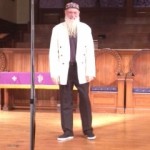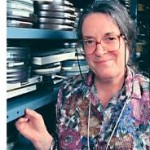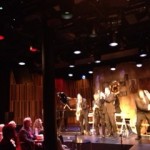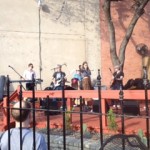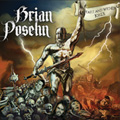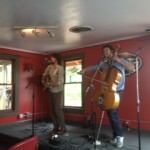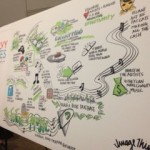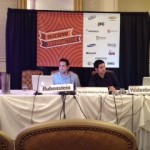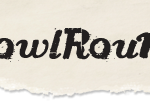 Jamie Gahlon asked arts journalist Chloe Veltman to answer some questions about criticism. She kindly obliged.
Jamie Gahlon asked arts journalist Chloe Veltman to answer some questions about criticism. She kindly obliged.
What is the state of arts criticism today, as compared to a decade ago?
There is relatively little genuine arts criticism in America today. But there is a lot of arts commentary.
I was thinking about this recently as I wandered through downtown Austin, TX, as the South by Southwest Festival was entering its final throes.
For the past five days, this city has been a playground for musicians and lovers of music. I don’t know how to begin to quantify the amount of discussion in writing, video and audio that the festival generated. I myself contributed to the overall noise, writing my blog, lies like truth, every day during my stay here (as well as during last week’s SXSW Interactive Festival.)
What I wrote provided hopefully interesting commentary on the music I experienced and other facets of the SXSW scene. But it wasn’t criticism, I realized. And with that realization, I felt bad.
The thing is that criticism, when practiced diligently, is a much higher calling than commentary. Anyone can comment on something.
But to construct an engaging, deeply felt, educational and entertaining response to a work of art is an art form in itself. And unless I spend the necessary time digesting the work, reading around it and thinking about it before putting my thoughts into the public domain, then it’s not criticism. It’s merely commentary.
In order to excel as a critic, I need the resources of time and money to do my best work. Because my blog isn’t paid and something that I write mostly off the cuff before getting down to paid writing gigs for the sheer joy of sharing immediate thoughts about the cultural scene, it is very much a venue for commentary rather than criticism.
I believe that I share this reality with most of the other people who cover the arts today.
With very few adequately remunerated jobs for arts critics left in the U.S. journalism scene as opposed to a decade ago, blogs—those great modern bastions of commentary—are thriving.
Meanwhile, true criticism is dying. (I know, I know, it’s a cliché to say this, but I can’t help myself because it’s true.)
Today, criticism is really the purview of a few people who still have those precious staff critics’ jobs for mainstream media organizations and those for whom money and time are meaningless. I am talking trust fund babies and trophy wives. That’s too bad.
If the thinking is that social networking is replacing professional criticism—and nixed a professional review’s ability to drive sales—then can some middle ground be found between professional criticism and interactive social networking and if so, what would that look like?
This question carries the assumption that the point of criticism is to drive ticket sales.
Box office revenue is one by-product of criticism, but in my view it has always been a minor one.
And I don’t think that the falling off of this aspect of criticism in the wake of the growth of social networking is hugely responsible for the demise of arts criticism in the media. It’s only part of the story.
In any case, if I accept this assumption, I would say that the middle ground, at least in the short term, is the acceptance of the fact that criticism is something that must be created by people who are passionate about art but not dependent on criticism as a way to make a living.
Once this reality has been established and accepted (and perhaps it’s just a short-term reality) then it’s a question of harnessing the web’s filtering power to allow the best of the (mostly amateur) voices to rise to the top.
So the middle ground is likely to be a mixture of the work of the few remaining professional critics, seasoned amateur critics (who may well once have been paid for their work in this field) and members of the public who have no particular arts writing background but have a strong enough editorial voice to be heard above the din.
Describe your arts criticism utopia.
In my arts criticism utopia, I would have the resources to practice criticism rather than commentary. And every day would bring a lively conversation between a wide community of stakeholders, including members of the public, artists and journalists, about art.
The original post on HowlRound can be found here.


